Believe it or not, there are almost 1.000 Salvia species worldwide. This tree is a member of the family Lamiaceae like basil, rosemary, lavender, and thyme. Depending on your wishes, you can grow this plant as an annual or a large, perennial shrub.
I like this tree for numerous reasons. Its purple blooms are a perfect home for honeybees, hummingbirds, and butterflies. Also, it is drought-resistant and requires just primary care. You need to find one or more varieties of Salvia you like most and spend years in a great, fragrant company.
Three Different Types
Very few families gather so many different types of plants, as is the case with the Lamiaceae family. Its members are considered annuals or perennials and can be deciduous, evergreen, or woody-stemmed shrubs. A few old-world types came from Asia and Europe, but there are American natives as well.
Anyway, we can recognize three primary types of this fantastic plant. Let’s see.
1. The deciduous herbaceous Salvias
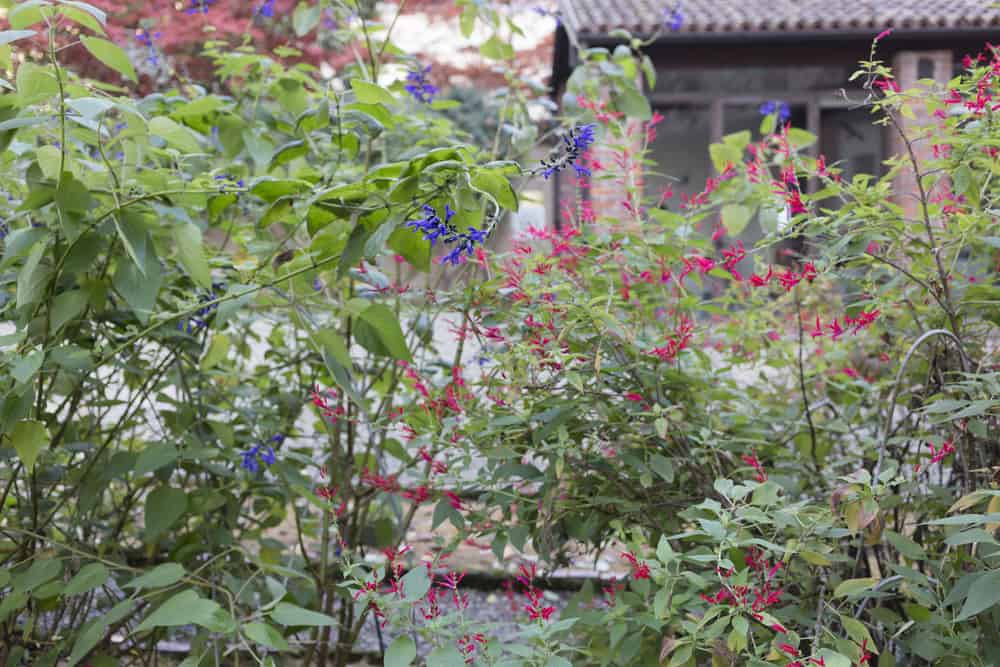
These Salvias are sensitive to low temperatures combined with high humidity, and they die in winter. You can help them avoid freezing by cutting in spring. This group includes:
- Salvia elegans
- Salvia darcyi
- Salvia disjuncta
- Salvia guaranitica
- Salvia farinacea
- Salvia leucantha
- Salvia nipponica
- Salvia waverley
- Salvia ulignosa
- Salvia koyamae
- Salvia longispicata
- Salvia madrensis,
- Salvia mexicana
- Salvia patens
- Salvia azurea
- Salvia engelmannii
- Salvia reptans
- Salvia glabrescens
- Salvia glutinosa
- Salvia puberula
2. Woody-stems, shrubby herbaceous Salvias
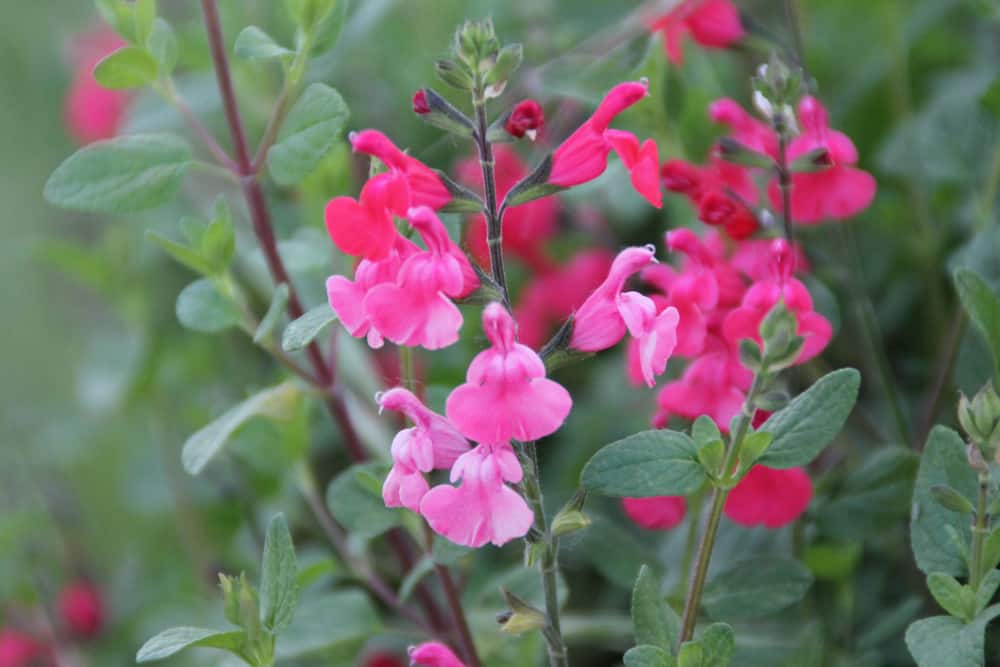
These Salvias are classified as shrubs or sub-shrubs. Even though they are basically evergreen, they start behaving as herbaceous perennials below the certain temperatures. This group includes:
- Salvia greggii
- Salvia chamaedryoides
- Salvia coccinea
- Salvia microphylla
- Salvia regl
3. Rosette-forming herbaceous Salvias
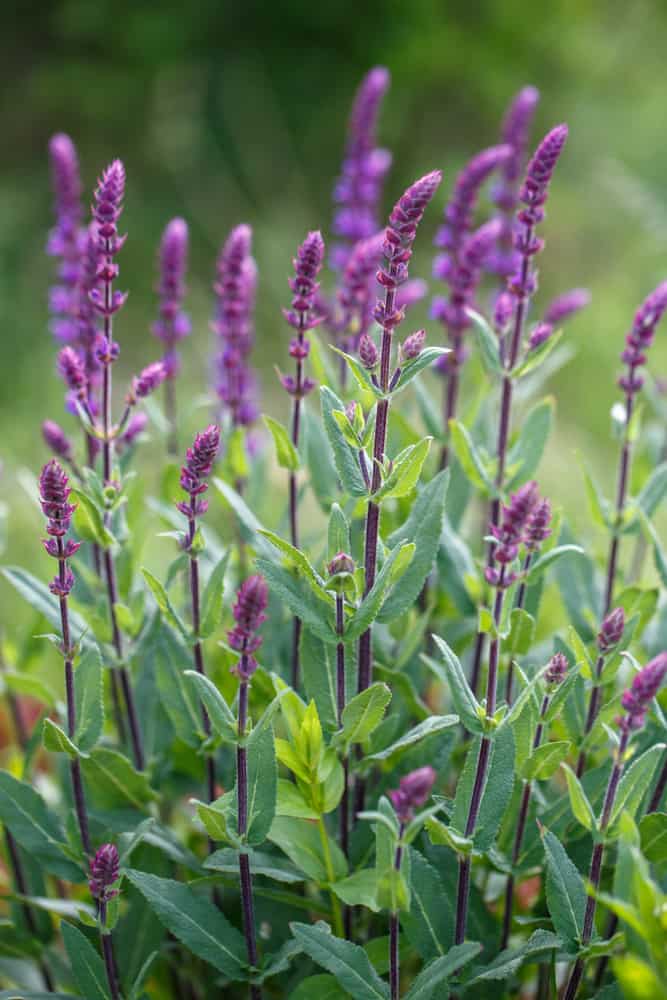
Most of these Salvias are interspecific hybrids (Salvia x sylvestris) which are well- known for forming a low evergreen rosette. Their stems are full of lush leaves and beautiful flowers. This group includes:
- Salvia lyrata
- Salvia pratensis
- Salvia nemorosa
- Salvia superba
- Salvia haematodes
- Salvia verticillata
- Salvia penstemonoides
The most popular varieties |
||||
|
Plant |
Latin name | Height | Flowers | Type |
| Bethellii | Salvia involucrata | feet (1.5 m) | Purple or pink |
Half-hardy |
|
Amistad |
Salvia guaranitica | feet (1.2 m) | Rich-purple | Half-hardy perennial |
| Ostfriesland | Salvia nemorosa | feet (75 cm) | Purple |
Hardy perennial |
|
Sage |
Salvia officinalis | feet (75 cm) | Blue | Evergreen plant |
| Stormy pink | Salvia greggii | feet (65 cm) | Soft pink |
Semi-hardy |
|
Caradonna |
Salvia nemorosa | feet (50 cm) | Electric blue | Hardy perennial |
| Victoria | Salvia farinacea | feet (40 cm) | Electric blue |
Half-hardy perennial |
Risks and Benefits of Salvia
Salvia is on the list of psychedelics for a long time. The Aztecs and Mazatecs from South Mexico used this plan during divination and for shaman rituals.
Misuse
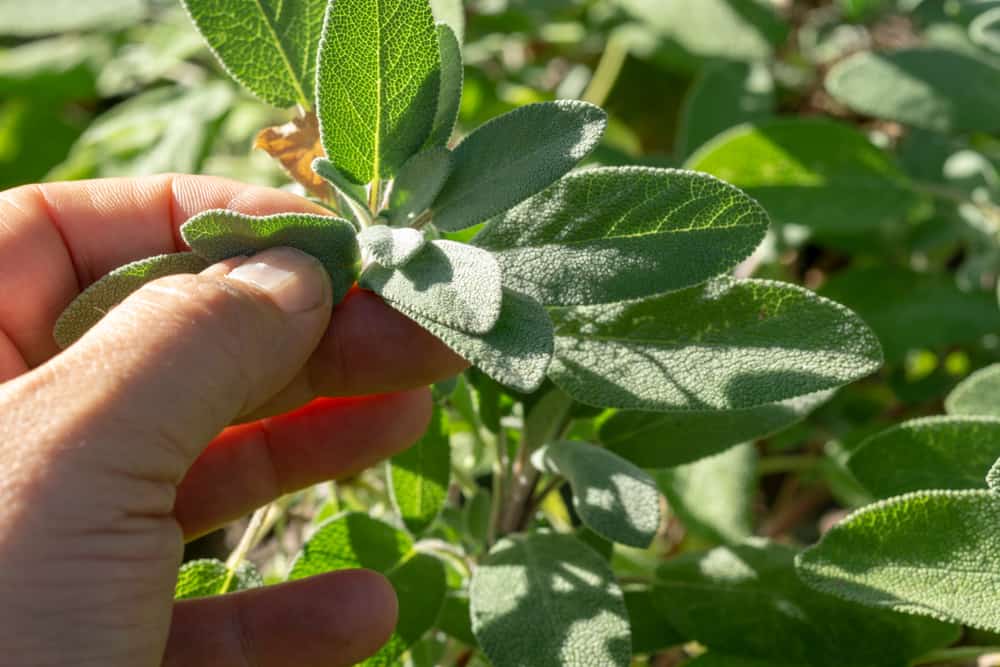
Nowadays, many young people recognize the hallucinogenic effects of Salvia divinorum and use it as a recreational drug. Unfortunately, thanks to teen pop singer Miley Cyrus, the popularity of recreational Salvias among students in the US has been increasing since 2010.
It is well-known on the streets as Leaf of Prophecy, Diviner’s sage, Maria Pastora, Lady Salvia, Purple sticky, Shepherdess’s herb, Magic Mint, or Sally-D.
According to data of National Institute on Drug Abuse, 0.6% of 8th graders, 0.7% 10th graders, and 0.9% 12th graders use Salvias as a narcotic.
Their reasons for consumption are curiosity, better mood, relaxation, or spiritual effects this plant can cause. The first effects appear after 1 to 30 minutes and may include hallucinations, mixed senses, mood swings, and feelings of detachment.
Benefits

However, this plant can be used as a medicament for solving issues such as anemia, headache, rheumatism, and diarrhea. The results of some studies show that Salvia may:
- Reduce inflammation – Drinking one to two cups of Salvia tea is beneficial for the human body, thanks to the antimicrobial and anti-inflammatory properties of this plant.
- Increase cognitive abilities – Salvia extract may improve memory thanks to enzyme cholinesterase.
- Reduce anxiety and depression – Salvias contain the active ingredient salvinorin A, which may help with overcoming stress. Plus, it increases feelings of self-awareness and relaxation.
- Ease premenstrual symptoms – Thanks to its essential oil, which has estrogenic activity, Salvia may ease the symptoms of PMS by reducing pain, headache, and swelling.
- Regulate the T3 hormone – Regularly drinking Salvia tea may increase the T3 hormone, which controls metabolic and physiological processes in the body. It is particularly essential for women in menopause.
- Relieve chronic pain – Salvinorin A from Salvias may help with the reduction of inflammatory and neuropathic pain.
- Schizophrenia – Research on rats suggests that salvinorin A, which affects human perception, could be potentially used for the development of drugs for treating schizophrenia.
Since it has numerous medicinal properties, Salvia is a plant you should always have at home. However, there are a few precautions you should keep in mind. Avoid drinking more than one to two cups of tea per day. Also, keep in mind that pregnant women, breastfeeding women, and people with any renal disorders should avoid this plant.
How to Plant Salvias in Your Garden
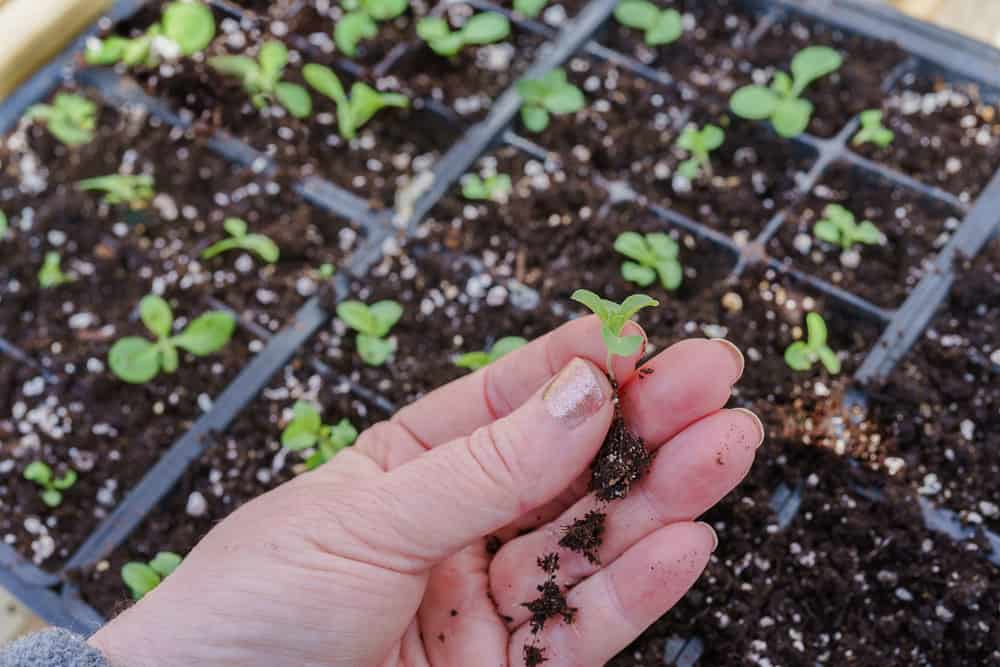
Sow seeds indoors in a pot approximately two months before last frost date. Transplant your Salvias seedlings in the garden in spring. Depending on the variety you have chosen, provide 1 to 3 feet (30.5 – 91 cm) of space between plants.
Loosen the soil with a garden fork 12 to 15 inches ( 30.5 – 38 cm) deep and add 2 to 4 inches of organic compost before placing plants into the hole. Be careful and take care that the diameter of the hole is twice the size of the pot in which the plant has grown.
However, you can decide to keep your plants indoors and to get an excellent decoration for your home at the same time.
Propagating
Take Salvia cuttings in April or early fall. Firstly, remove the lower leaves and 3 inches (8 cm) long stems without flowers. After that, trim each cutting below nodes and put them into a container filled with compost.
To save the temperature and humidity, cover them with a plastic bag without touching the foliage. After three weeks in a cold greenhouse, your cuttings are ready for planting in the pot.
How to Care Salvias in Your Garden
Spot
You can grow your Salvia as a single plant. In that case, you should provide at least 11 inches (28 cm) of space for it. If you decide to plant a lot of them in a flower bed, make adequate rows for your flowers.
Organize them a way to plant them at least 11 inches (28 cm) apart, with 12 to 24 inches (30.5 – 61 cm) between rows. It is essential because these species requires an excellent airflow. Also, try to protect your flowers from extreme winds as well, until they have established.
Soil
You can expect your Salvias to thrive in moderately fertile, but well-drained sandy to ordinary soil. If you start your plant in a pot, a combination of the garden soil with a bit perlite will be good enough for it.
Soak the plant’s roots with water before transplanting them in the garden. After that, keep the soil dry, and let your flowers grow vigorous and healthy.
Light
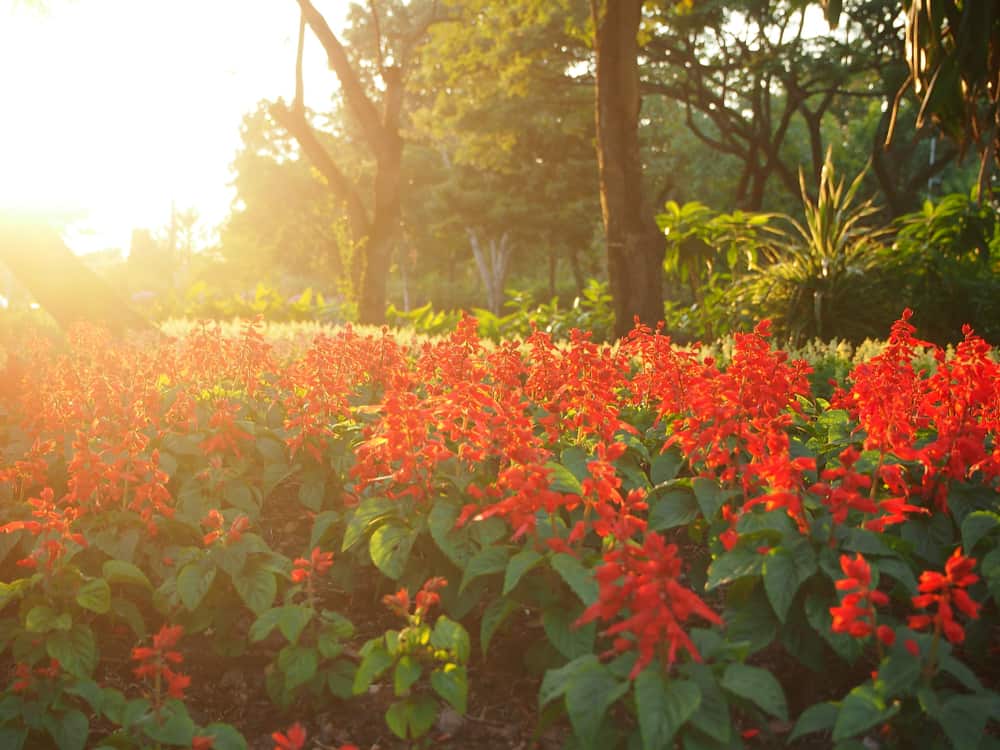
Most of the Salvias prefer full to partial sun, and you can expect them to reduce flowering if the space they are planted is too shade. Moreover, the amount of sunlight during a day will directly influence the color of their blooming.
For example, annual, lighter-colored varieties need partial shade to avoid burning on the midday sun. On the other hand, darker varieties are resistant to sunburn and require at least 6 to 8 hours of full sun a day.
Temperatures
These frost-intolerant plants need warm temperatures during the whole season. On the other hand, they are quite tolerant of heat and drought.
Watering
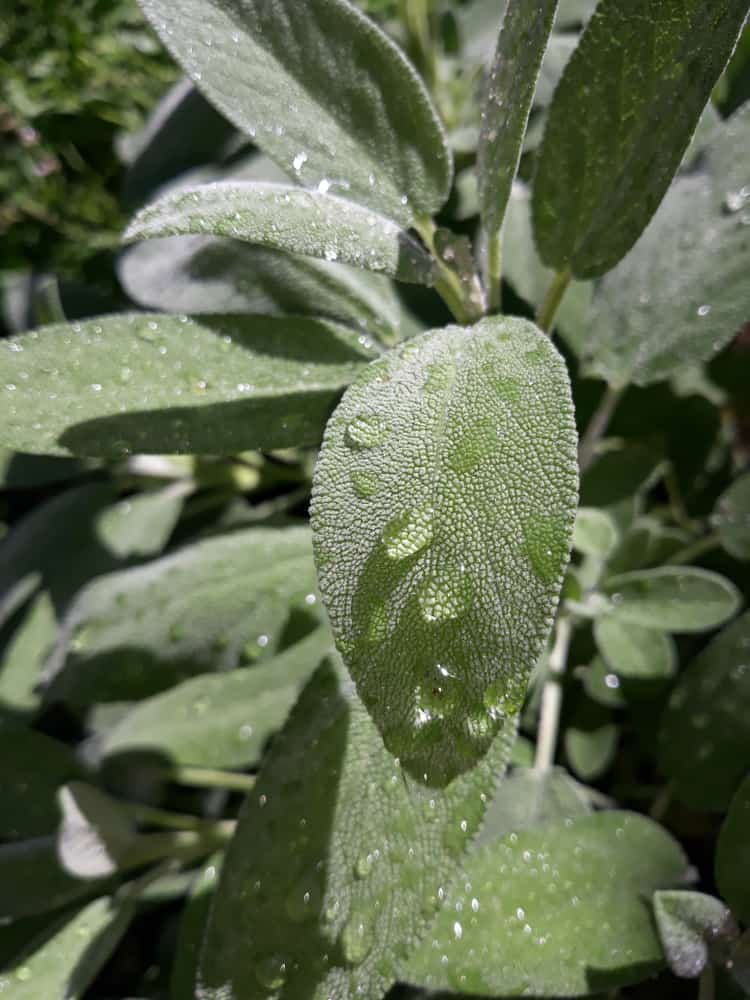
Different types of Salvias won’t need the same amount of water. However, almost all of them require the soil to dry out between two watering.
Water your plants when necessary to encourage continuous blooming. It will be enough to soak the ground approximately 0.5 to 1 inch (1.3 – 2.5 cm) deep. It is about 6 gallons (24.5 l) per 9.5 square feet (0.9 m2) once a week. Only new transplants need more watering until they establish well.
Fertilizing
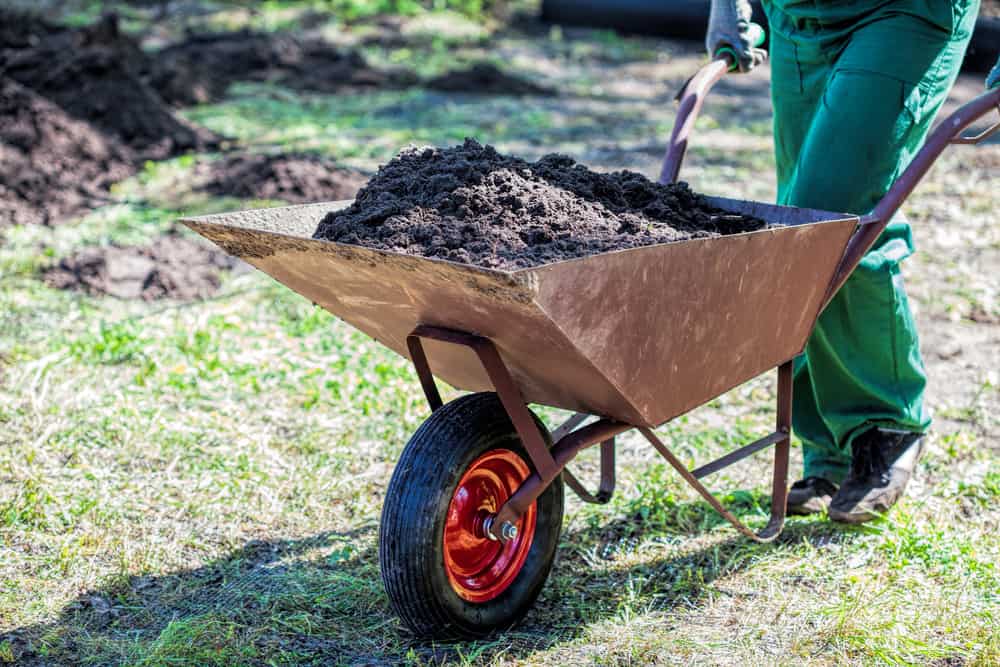
Salvias don’t need too fertile soil and regular fertilizing. In most cases, they will need one application of 1 inch (2.5 cm) of compost or a balanced, slow-release fertilizer in early spring. If you decide to encourage new growth of flowers, you can add liquid plant food in mid-summer as well.
Be careful when fertilizing because too much fertilizer can cause flopping over the stems. Also, when you add granular fertilizer, take care to keep it away from the crown and leaves of your plants to avoid burning.
Mulching
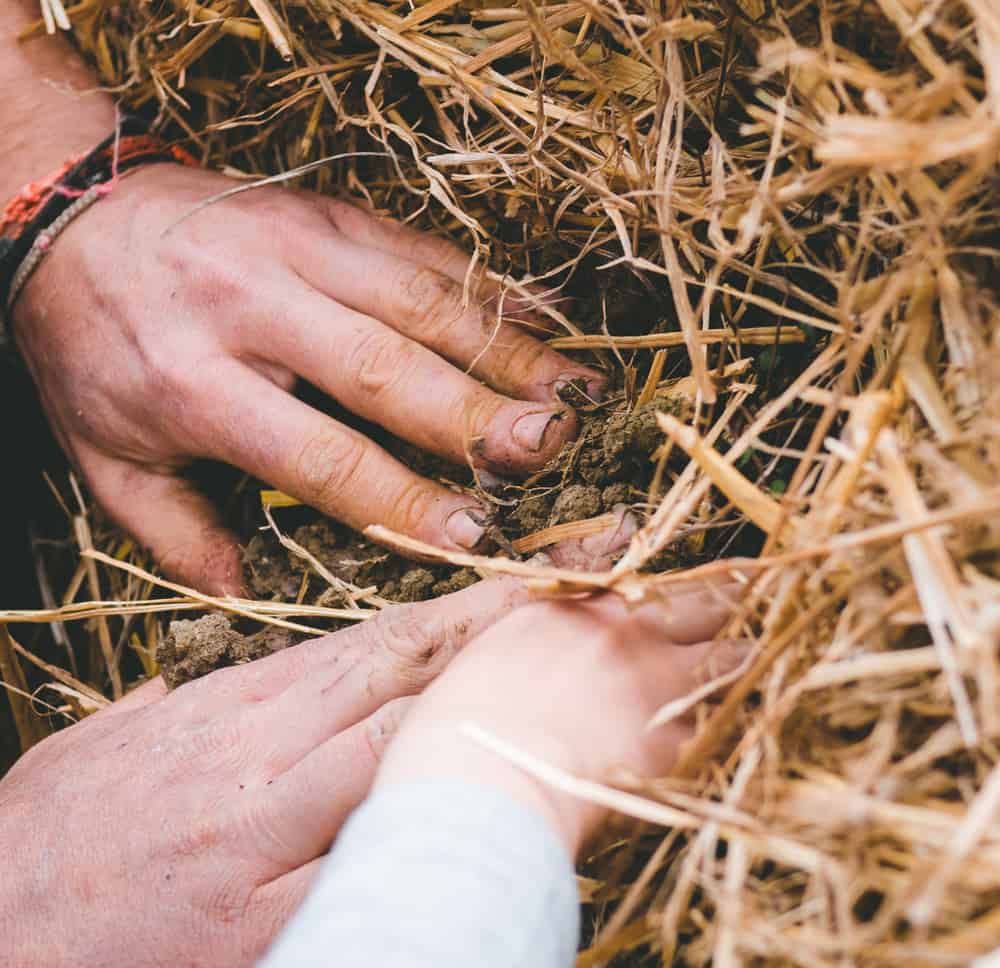
Adequate mulching is essential for retaining moisture in the ground, control growth of weeds, and maintain the soil temperatures. Organic mulch is always the best option. You can use grass clippings, shredded leaves, or aged bark for that purpose. Don’t forget to prevent rot by keeping mulch away from stems.
Weeding
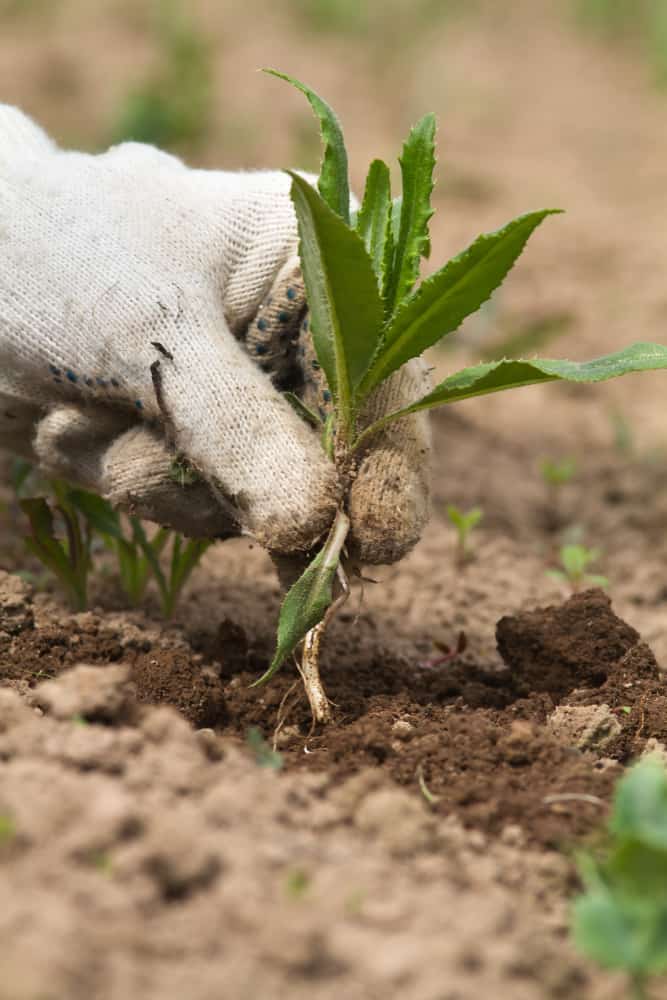
I can’t emphasize enough the importance of keeping weeds under control throughout the whole growing season. As you probably guess, they will compete with your Salvia for water and nutrients, and consequently cause weak growth of the flowers.
Cutting
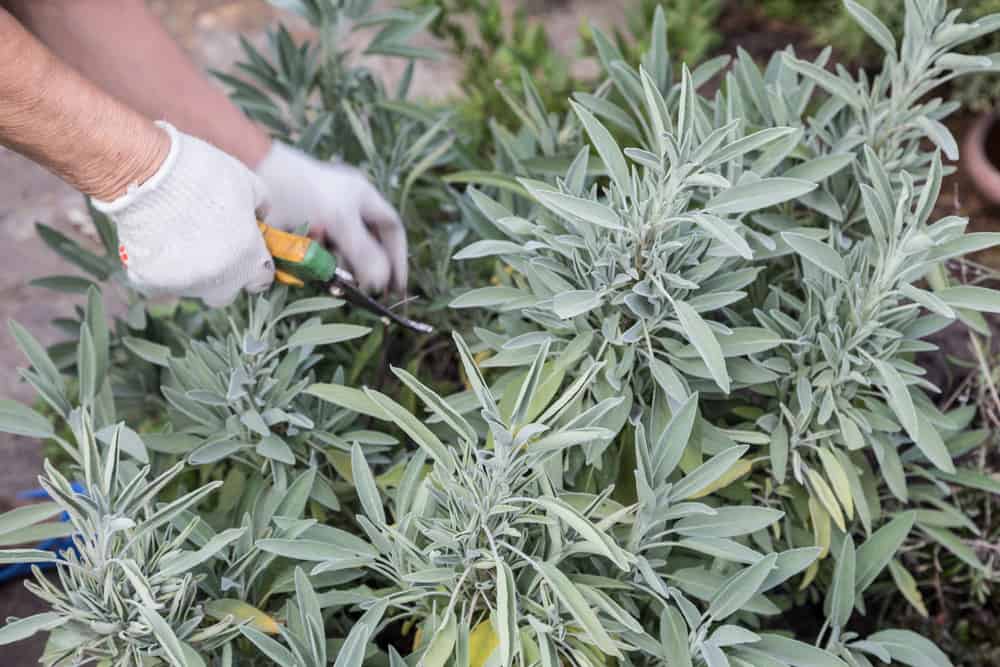
Do your Salvias need cutting or how often you should do it will depend on the variety you choose to grow in your garden. There is no need for cutting annual types. Pick up them before the first frost in fall and put the whole plants on the compost pile.
However, if you grow hardy perennial Salvia, you should cut it in spring or fall. Shrubby types require light pruning in spring. Avoid cutting shrubs in fall to avoid frost damaging. Don’t forget to remove spiky racemes regularly to encourage new flowering.
The great thing is that you can cut up to one-third of Salvia if it begins to overgrow or wilt. It will regrow successfully and keep blooming until late fall.
Deadheading
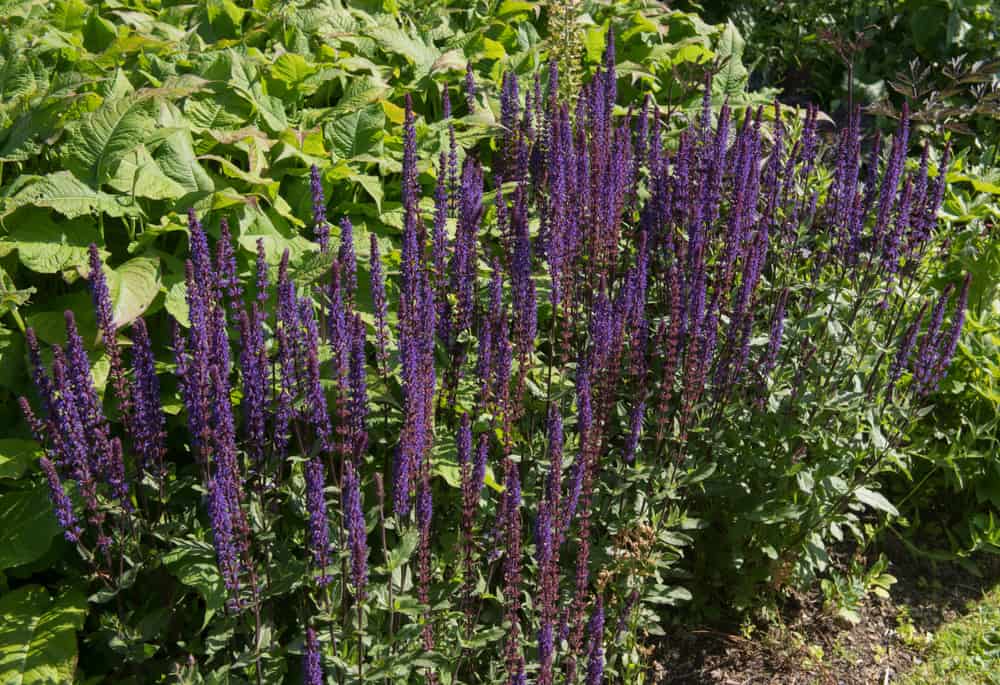
That is the process of removing wilted flower heads to encourage new blooming and preventing the development of seeds. If you do it regularly, your Salvias will flourish abundantly.
Salvia Flopping
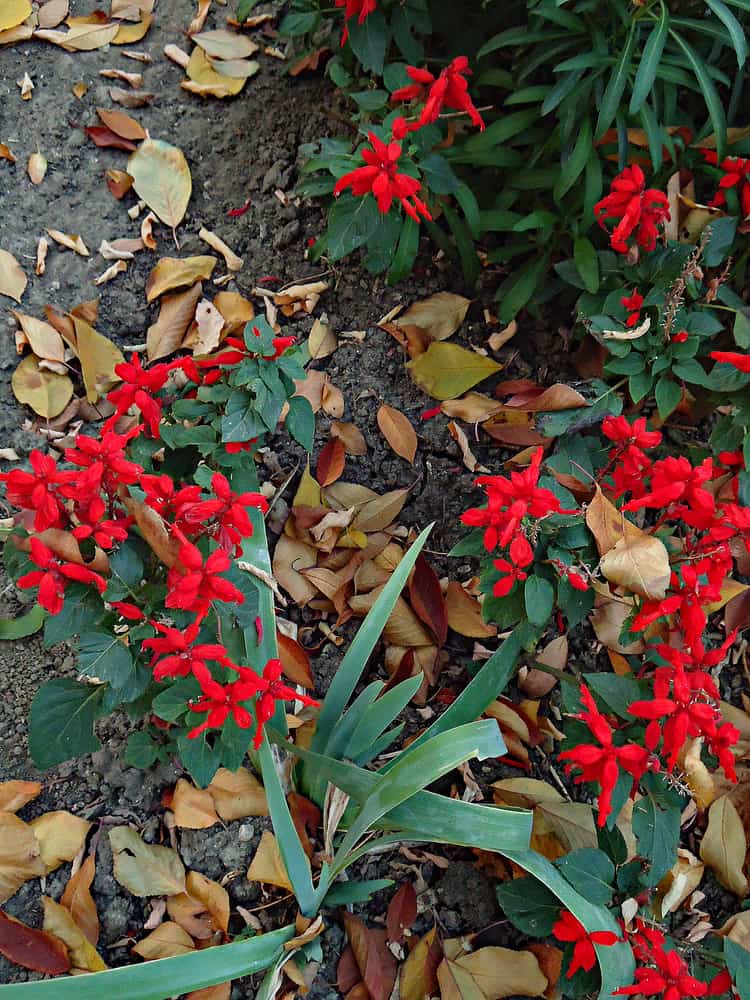
Sometimes you can notice your Salvias begin to flop. The possible reasons are excessive watering and/or fertilizing and lack of sun. In that case, help your plants by providing stakes for adequate support or deadhead the wilted blooms to let new ones grow.
Salvias Pests and Diseases
There is no severe disease or pest, which can affect Salvia too much. You may face some issues with root rot, powdery mildew, or aphids, but in fact, these problems appear sporadically. If you notice any, a strong stream of water is usually everything needed for knocking pests off the flowers and foliage.
Slugs and snails sometimes can cause a problem, but you can hand-pick them. The other efficient solution is placing a board over the dampened soil during the night. Move the board in the morning and throw these annoying creatures into a bucket with soapy water.
Rabbits and deer may choose your Salvias as an excellent source of food, but it is a rare case since they avoid too fragrant plants.
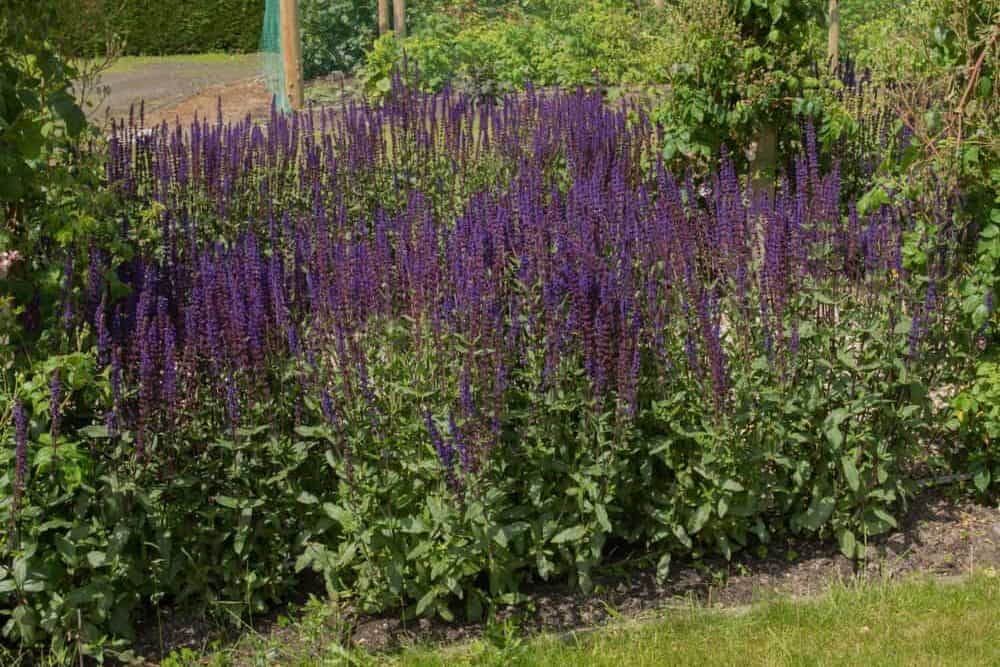
Leave a comment